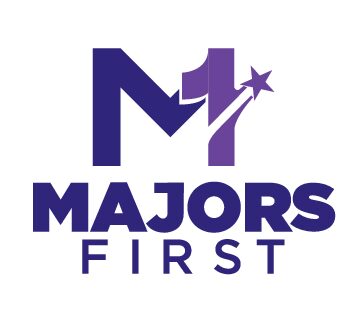Planned Giving
Stronger together
Planned giving integrates your charitable gift into your overall financial, tax and estate planning to maximize benefits to you and to Millsaps College. One charitable gift can provide a lifetime of benefits. You can ensure the future success of Millsaps College and the access to a premier education through gift planning today. Depending on the arrangements you choose, you can also:
- Reduce income taxes
- Increase spendable income now
- Avoid taxes on capital gains
- Retain payments for life
Why I Give
Gift Options
Learn about your options on what to give and how to give.
Bequests
Create a lasting legacy by making Millsaps College a beneficiary in your estate plan.
Calculators
Explore a variety of giving options with our gift calculator, which provides personalized scenarios.
Create Your Plan
Learn how to start. Our resources give you the peace of mind that comes with having a plan.
Estate Planning
An estate plan can reduce much or even all federal and state estate taxes and state inheritance taxes. It can also decrease the income tax beneficiaries might have to pay.
Terms & Definitions
We have compiled a list of helpful terms and definitions to assist in your planning.
Estate Planning
Estate planning is the preparation of a plan to carry out an individual’s wishes as to the administration and dispositions of their property before or after their death. A well-drafted estate plan is your assurance that the taxes and costs associated with your death will be minimized —this involves writing a will to designate beneficiaries, and possibly setting up trusts to reduce estate tax liability. Even just a bit of estate planning can enable couples to reduce much or even all of their federal and state estate taxes and state inheritance taxes, while decreasing the income tax that their beneficiaries might have to pay.
This preparation is about protecting your loved ones, which means in part giving them protection from the Internal Revenue Service (IRS) — without a plan, the amount that your heirs will owe could be quite a lot. Transferring assets to heirs with an eye toward creating the smallest possible tax burden for them is essential to estate planning.
Are you ready to plan your will or trust? We would like to give you a FREE Estate Planning Guide.
Helpful Terms & Definitions
Adjusted Gross Income (AGI)
AGI is an individual’s taxable income after all specific deductions, but not standard or itemized deductions. It is an important number used by the IRS to determine how much you owe in taxes. It is calculated by taking your gross income for the year and subtracting any deductions that you are eligible to claim. Therefore, your AGI will always be less than or equal to your gross income.
Capital Gain
A capital gain is an increase in a capital asset’s value and is considered to be realized when the asset is sold. A capital gain may be short term (one year or less) or long term (more than one year) and must be claimed on income taxes. Unrealized gains and losses, sometimes referred to as paper gains and losses, reflect an increase or decrease in an investment’s value but are not considered a taxable capital gain. A capital loss is incurred when there is a decrease in the capital asset value compared to an asset’s purchase price.
Charitable Deduction
The charitable contributions deduction allows taxpayers to deduct all of their contributions of cash and property to qualifying charitable contributions within certain limitations.
The charitable contributions deduction allows taxpayers who make substantial charitable gifts to take sizeable tax deductions for the year in which their donations are made. The rules for deducting these gifts can be complicated in certain instances, so it is wise to consult a tax advisor.
Donor-Advised Funds (DAF)
A donor-advised fund is a dedicated account for charitable giving typically administered by a public charity such as Community Foundation. When you contribute to your donor-advised fund, you are eligible for an immediate tax deduction. You can then recommend charitable grants (gifts) over time to any IRS-qualified public charity while investing the funds for tax-free growth. Donor-advised funds provide many benefits for organizing and planning giving, but they also offer advantages in terms of income, capital gains and estate taxes.
Qualified Charitable Distribution (QCD)
A qualified charitable distribution (QCD) is a direct transfer of funds from your IRA custodian, payable to a qualified charity. QCDs can be counted toward satisfying your required minimum distributions (RMDs) for the year, as long as certain rules are met.
Required Minimum Distribution (RMD)
A required minimum distribution (RMD) is the amount of money that must be withdrawn from an employer-sponsored retirement plan, traditional IRA, or other individual retirement account by owners and qualified retirement plan participants of retirement age.
** In 2020, the age for withdrawing from retirement accounts changed. You must begin withdrawing from a retirement account by April 1 following the year account holders reach age 72 (prior to 2020, the RMD age had been 70½ years old). The retiree must then withdraw the RMD amount each subsequent year based on the current RMD calculation.
Trust
A trust is a legal arrangement whereby control over property and/or assets is transferred to a person or organization (the trustee) for the benefit of someone else (the beneficiary).
When you create a trust, you transfer money or other assets to the trust and give up ownership of those assets. By doing so, you accomplish a specific financial goal such as protecting assets from estate taxes, simplifying transfer of property or making provisions for minor or dependent children.
Will
A will is a legal document used to transfer assets you have accumulated during your lifetime to people and institutions you want to have them after your death. Your will should name an executor who will carry out your wishes. You can leave your assets directly to your heirs or you can establish trusts to receive the assets and distribute them at some point in the future.
The danger of dying without a will is that a court in the state where you live will decide what happens to your assets, and the decision may not be what you would have chosen.
Retirement Accounts
An individual retirement account (IRA) is a tax-advantaged account used by individuals to save and invest for retirement. An IRA can be set up at a financial institution and allows an individual to save for retirement with tax-free growth or on a tax-deferred basis.
Pension Plan
A pension plan is a retirement plan that requires an employer to make contributions to a pool of funds set aside for a worker’s future benefit. The pool of funds is invested on the employee’s behalf, and the earnings on the investments generate income to the worker upon retirement.
In addition to an employer’s required contributions, some pension plans have a voluntary investment component. A pension plan may allow a worker to contribute part of their current income from wages into an investment plan to help fund retirement. The employer may also match a portion of the worker’s annual contributions, up to a specific percentage or dollar amount.
Roth IRA
Roth IRA contributions are not tax-deductible, but qualified distributions are tax-free. You contribute to a Roth IRA using after-tax dollars, but you do not face any taxes on investment gains. When you retire, you can withdraw from the account without incurring any income taxes on your withdrawals. Roth IRAs also do not have RMDs. If you don’t need the money, you don’t have to take it out of your account. You can still contribute to a Roth IRA as long as you have eligible earned income, no matter how old you are.
SEP
A simplified employee pension (SEP) is an individual retirement account (IRA) that an employer or a self-employed person can establish. SEP IRAs are treated like traditional IRAs for tax purposes and allow the same investment options. The same transfer and rollover rules that apply to traditional IRAs also apply to SEP IRAs. Because the funding vehicle for a SEP plan is a traditional IRA, SEP contributions, once deposited, become traditional IRA assets and are subject to many of the traditional IRA rules.
Millsaps Gift Officers

Major Gifts Officer
View Full Biography

Advancement Operations Manager
View Full Biography

Assistant Director of Annual Giving
View Full Biography

Donor Relations Manager
View Full Biography

Vice President of Institutional Advancement
View Full Biography

Gift and Data Processing Specialist
View Full Biography

Associate Vice President for Advancement Operations
View Full Biography
Contact Institutional Advancement
Millsaps College
Institutional Advancement
1701 North State Street
Jackson, MS 39210-0001
Telephone: 601-974-1026

Latest News
Alumni Spotlight: Meghan Brock, Class of 2005
Millsaps taught me how to think outside the box, which was essential when I had to take on a completely different career than I had studied.

Alumni Spotlight: Madelyn Palomeque, Class of 2014
Madelyn gives back to Millsaps because she believes in the transformative power of a liberal arts education. As a recipient of the Presidential Scholarship, she is committed to supporting future generations of students, ensuring they have the same enriching experience that shaped her life.

Alumni Spotlight: Amanda Gerhardt, Class of 2018
Millsaps offers students the opportunity to engage with diverse perspectives and build meaningful relationships.

Majors First! Millsaps Launches Support Network for First-Gen Students
Many first-gen students feel isolated and unsure about how to approach college. Majors First seeks to break down the barriers, foster engagement, increase success and promote a sense of community among these students.
